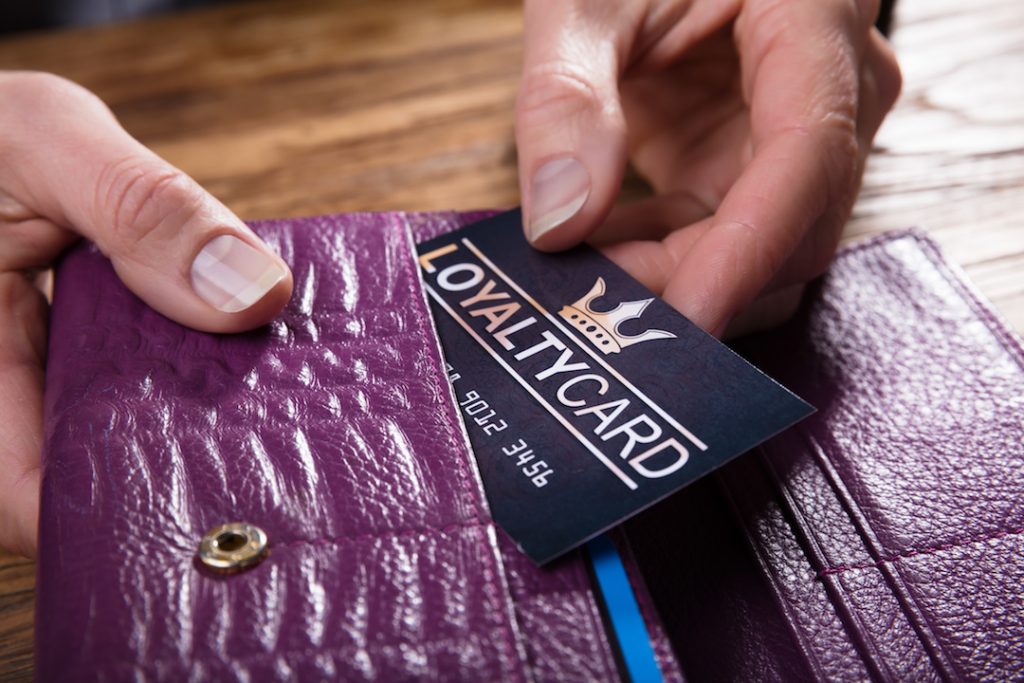
Ever wonder where your new customers come from? They came from someone else’s brand! That’s right, they lost them and you picked them up! The question is can you hold on to those new customers, or will you lose them like they did?
What are the customer loyalty factors that the other brand ignored and you must focus on? What makes a person loyal to a brand?
Before we get all puffed up on the role marketing plays to create brand loyalty, let’s consider the plight of the customers themselves. Are there any factors built into their own circumstances and behavior that caused them to tend toward brand loyalty?
Customers don’t like to switch brands because they don’t like to shop – especially for branded retail products. They are aware that when they change brands they are risking disappointment after disappointment until they finally find a new brand that provides them with consistent and dependable value. The process alone of shopping for a new brand causes anxiety and wastes their precious time.
For these reasons, when they do find a brand that meets with their satisfaction, they tend to be loyal. You have to remember that they are shopping for hundreds of items. Having a brand they can depend on is just one less anxiety. They’ve got a brand they can trust for that category, and now they can stop shopping for a replacement.
But even that level of homeostasis can be disrupted by the action, or more commonly, the inaction of the brand builder. Here then is our take, after decades of hands-on experience with an ultimately successful retail product, on the customer loyalty factors that affect the success of a brand:
Access
We like to say, “They can’t buy it if it isn’t there!” Simply put, the worst customer experience in the world is when your loyal customer goes back to buy your product and finds it’s out of stock. What’s worse is when they ask for help, the clerk says, “They don’t make it anymore,” or “We don’t carry that brand anymore,” or “That brand is hard to get.”
Never mind that the brand is still in the back room and the clerk hasn’t had time to bring it out, price it, and put it on the shelf. Never mind that your brand was so popular that it sold out and the clerk forgot to reorder it. And never mind that your distributor salesperson never noticed it was low on inventory. It’s just plain not there – and the customer can’t buy it.
Two things happened. Now the customer thinks your brand is “undependable.” And now the customer buys another brand because she doesn’t have time to look for it at another store or order it online. The retail store achieved its goal of making a sale in your category. It just wasn’t a sale of your brand.
Bottom line: Keep your brand in stock! Your customer won’t be loyal to a “undependable” brand.
Identity
It’s difficult to be loyal to a brand that’s hard to identify. What if your brand is in the store, it’s in stock, and it’s right in their face, but they can’t see it? This can happen for a variety of reasons.
Maybe your label designer didn’t take into account the myriad of other labels immediately adjacent to yours that would be vying for your customer’s attention. They thought their design was cool, mysterious, stealthy, or subtle. They thought curly queues on your brand name would make it look fancy. They thought light hues and faded colors would make your label attractive. They didn’t. They made it hard to find!
As mentioned, your customer is shopping for many items and has a limited amount of time. They don’t have time to play games or solve problems. They scan the category that your brand is part of. If it doesn’t pop, if you don’t have a sharp, clear, memorable logo that’s easy to recognize and distinguished, if you haven’t chosen an advancing color scheme, and if your name isn’t clean and clear and easy to spot, you’ll lose them!
It’s hard to be loyal to a brand you can’t find. When it comes to logos, labels, packaging and marketing materials, keep them simple, clear, and crisp. You only have a second to say, “Here I am, the brand you’ve been looking for!”
Designing brands and labels for the demands of the retail space is more of a problem-solving feat than an expression of creativity. Customer loyalty depends on it being done with their needs in mind!
Expectations
We like to say, “You don’t own your brand. Your customer owns it.” And they own your brand promise as well. After all, they refer to it as “my brand.”
 When it comes to brand promise, it’s their expectation of the behavior of you, your company, and your brand that they consider their own. If that expectation is met with consistent satisfaction, they will reward you with brand loyalty.
When it comes to brand promise, it’s their expectation of the behavior of you, your company, and your brand that they consider their own. If that expectation is met with consistent satisfaction, they will reward you with brand loyalty.
Most brand builders believe that they can dictate the brand promise from the top down to the customer. They believe they can do this with advertising, marketing programs, and commercial campaigns. They can’t. Ultimately, it’s your customer’s personal history with your branded product and knowledge of your company that forms their expectations.
For instance, when a brand builder makes a change to the logo, label, package, pricing, or product, they run the risk of breaking the brand promise and losing customer loyalty. This is why we believe in evolution not revolution when it comes to “improvements”.
When you consistently honor the brand promise your customer already has in mind, you build brand loyalty. Don’t rock the boat or you’ll risk sinking it!
Community
What does your brand stand for? Sure, it stands for quality and dependability, but what does your brand stand for beyond its mercantile value? What do you and your company do to support your community?
Customers know they are voting with their purchases. When they buy your brand they want to believe they’re making the world a better place. They want to know that their money is going for something besides goods, services, labor, and profits.
We built the Barefoot Wine brand without commercial advertising. It wasn’t a conscious decision at first. We simply couldn’t afford it. We were told that we would have to advertise repeatedly over an extended period of time to gain any traction and that if we stopped we would be conspicuous by our absence.
Instead, we discovered that by supporting local worthy causes in the vicinity of the stores where our products were available, we created a form of brand loyalty that was stronger than any commercial advertising could provide.
By supporting local causes, several factors occurred that created long-term brand loyalty. The members of the nonprofit organizations now had a social reason to buy our product. They could buy any product, but they chose the one that supported their goals. And they didn’t just buy our product, they became brand advocates and told their friends, relatives, and associates that they too should buy our products.
We gave these groups access to a forum they couldn’t reach on their own, the supermarket shopper. We used our product as a platform to communicate their goals to the customers. The customers saw that we stood for more than our product and that in itself encouraged brand loyalty.
Endorsements
You can advertise all you want about how great your brand is. But in the final analysis, it’s what someone else says about your brand that makes a difference in brand loyalty. Your customer wants validation that they are doing the right thing by remaining loyal to your brand.
We highly recommend an ongoing campaign that communicates third-party endorsements on a regular basis. These don’t have to be celebrities. They can be satisfied customers. Their endorsement should be specific to some desirable aspect of your product or some beneficial outcome of using it.
We recommend entering every contest and product competition you can – especially to establish your quality for price. It’s not enough to win these competitions. You must communicate these accolades right on your package and the sooner the better.
If we won a contest in Dallas, for instance, we would immediately create marketing materials that could fit both on our packages and on the shelves in the stores. Within 24 hours, we would have those materials up and visible on our products in the stores in the Dallas area. People want to be loyal to a local hero. The news is only new for a short time.
If we got a write up in print or online, we would immediately include it in all correspondence and presentations to all buyers. Even potential buyers would get these endorsements. When we finally made a presentation they would often say, “Oh, Barefoot! I read about that brand everywhere!”
Show your loyal customers that they made the right choice and they will stay with you. Give your brand advocates something to brag about!
Service
Many retail product brand builders think they’re in the product production business. They’re not! They’re in the service business. Customers judge you not so much by how well you do when things are moving smoothly, but by how well you do when there’s a problem.
 The service quality of how you handle that problem is a big factor in their continued brand loyalty. How were they treated? When they called your 800-customer service number, how long did they have to wait before they got a real human being to address their issue with your brand? Did they get passed around? Did they get dropped off? Did your customer service people read from an impersonal script?
The service quality of how you handle that problem is a big factor in their continued brand loyalty. How were they treated? When they called your 800-customer service number, how long did they have to wait before they got a real human being to address their issue with your brand? Did they get passed around? Did they get dropped off? Did your customer service people read from an impersonal script?
We have seen many top-down companies refer to their customer service department as “complaint resolution.” They rate them on how many complaints they can resolve on the phone that don’t “go up” to marketing and production.
We believe customer service departments should be called “customer intel” because it’s an opportunity for marketing and production to maintain customer loyalty while ensuring the relevancy of their message and products. But this requires formal lines of communication within the company
You have to remember that when your customers take the time to call and complain they’re already demonstrating loyalty to your brand. That’s why they’re trying to resolve the issue.
They are also outspoken. That’s why they’re on the phone and more importantly, that’s why they will tell their friends, neighbors, and family how they were treated.
This is your opportunity to demonstrate true service quality. Respect who they are and their potential to either advocate your brand or warn people against it. It’s all about how they were treated!
Appreciation
So you’ve done everything right and you have loyal customers. But can you hold on to them?
There are many ways to show customer appreciation. Give them special offers, savings, bonuses and other forms of special attention that says, “I know you are a regular customer and I want to show my appreciation.”
A common form of customer loyalty programs is rewards. Whereas this works well for airlines, credit cards, and online merchants, with retail it’s harder to keep track of your buyers. But you still can reward loyal customers by offering quantity discounts that are based on the assumption that they buy your brand on a regular basis.
Another form of customer loyalty programs is to offer customers discounts when they join an online club. The club offers coupons to members only.
When you say thank you often you are acknowledging your customers’ loyalty and demonstrating that they are appreciated. This will be a big factor in their continued brand loyalty.
Adam Toporek’s defines customer loyalty as:
“The continued and regular patronage of a business in the face of alternative economic activities and competitive attempts to disrupt the relationship.”
You disrupted the relationship between your customer and their former brand. By respecting these customer loyalty factors, you can thwart competitors’ attempts to disrupt the relationship those same customers now have with your brand. And you can make sure they continue to say, “That’s my brand!”

